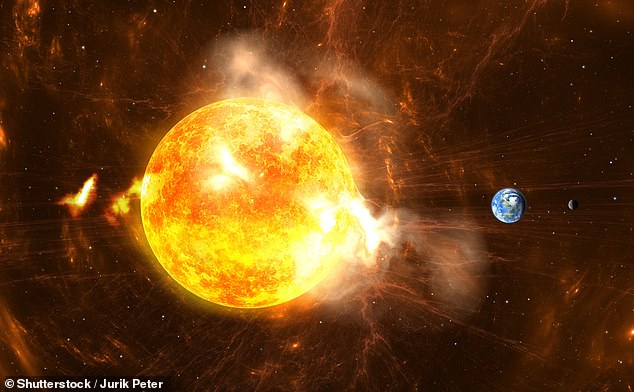
Minute-by-Minute Timeline: Solar Superstorm’s Catastrophic Impact on Earth as Scientists Warn of Imminent Threat
Solar Superstorms: The Looming Threat of an "Internet Apocalypse"
A catastrophic solar superstorm capable of triggering an "internet apocalypse," disabling satellites, and collapsing power grids could strike Earth "at any moment," scientists warn. Such an event, last observed over 1,000 years ago, would devastate modern infrastructure, causing widespread blackouts, financial chaos, and disruptions to water and food supplies.
The Miyake Event: A Historical Precedent
In 2012, researcher Fusa Miyake discovered a spike in carbon-14 within ancient Japanese cedar tree rings, dating back to 774 CE. This anomaly pointed to a massive solar particle burst—now dubbed a "Miyake event." If a similar storm hit today, it would overwhelm power grids, melt transformers, and plunge cities into darkness for months.

A solar superstorm could cripple global infrastructure (stock image).
Modern-Day Catastrophe
Professor Mathew Owens, a space physicist, explains the risks:
- Power Grid Collapse: Transformers could burn out, causing prolonged outages. Repairing them would take months, halting access to electricity, clean water, and refrigeration.
- Internet & Financial Meltdown: Satellite failures and damaged undersea cables could crash financial markets and disrupt global communications.
- Aviation Risks: High-altitude flights near the poles would face radiation spikes and communication blackouts.
- Ozone Layer Damage: Long-term harm to the ozone could increase UV radiation exposure.

Financial markets like the New York Stock Exchange would collapse without internet.
The Carrington Event Comparison
The 1859 Carrington Event—the largest recorded geomagnetic storm—caused telegraph systems to spark and auroras as far as the Caribbean. A Miyake event, however, would be 10 times stronger, with far deadlier consequences for today’s technology-dependent society.

Power grid failures could leave cities in darkness, as seen in Havana, Cuba (2023).
Limited Warning, Lasting Damage
Scientists estimate only 18 hours of advance notice before a Miyake event strikes. While radiation exposure for humans would be minimal (comparable to a few X-rays), the ozone layer depletion and infrastructure damage would have cascading effects. A 2022 study warned of an "internet apocalypse" from fried satellites and cables, urging better preparedness.

NASA’s 2024 solar flare image—a fraction of a Miyake event’s power.
A Silver Lining: Global Auroras
The sole upside? Dazzling auroras, like the Northern Lights, could illuminate skies worldwide.

Spectacular auroras might be visible globally during a superstorm.
Conclusion
As society grows more reliant on technology, the threat of a solar superstorm looms larger. Experts stress the need for resilient infrastructure and global cooperation to mitigate what could become a civilization-altering disaster.


